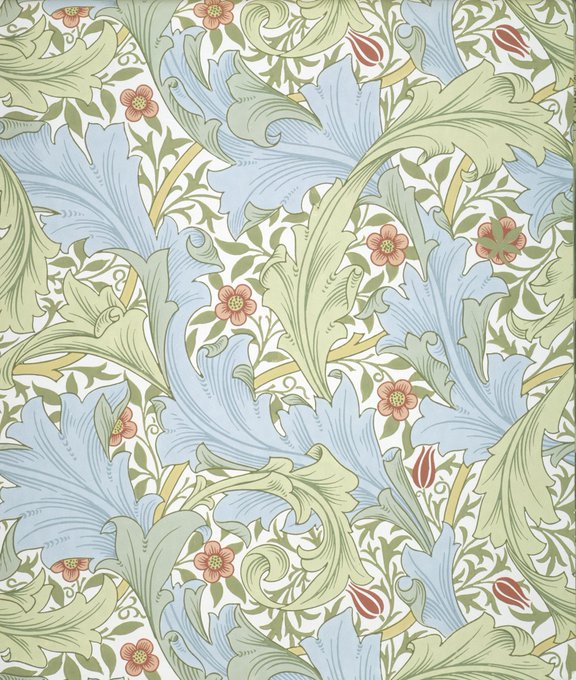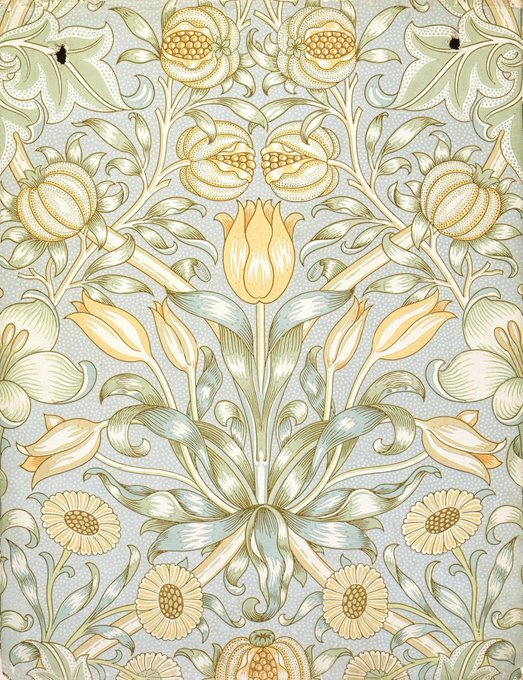As can be seen in the photograph, the sample of St. James's shown above isn't the whole pattern - rather, it's a symmetrical pattern so broad that it required two widths of wallpaper to capture.
I mocked up a general impression by flipping the sample.
The light versions of Granville and Leicester are somewhat similar, and in keeping with the Edwardian shift away from the intensity of color favored by many Victorians.
(Leicester samples here and below: Brooklyn Museum)
The corncockle of the pattern's name is one of its smaller motifs, the pink flower seen here. The plant, Agrostemma githago, was once a common wildflower of wheatfields and other agricultural land. It is rarer today because of modern farming methods.
https://t.co/QyYbF06dEz
The Daffodil textile design is very characteristic of Dearle. His style can be seen particularly in bold decorative details like the elaborate stems and the foliate designs on the tulip petals.
For example, compare Arcadia and Horn Poppy to William Morris designs of the same period like Fritillary (1885) or Lily and Pomegranate (1886).
I like Single Stem's drama, especially in the dark form, but I'm most enamored of its small details - especially the curved stripes on the stems and the gradated dotting that adds dimension to the foliage. The blooms are also beautifully elaborate.
(V&A, Brooklyn Museum)
Single Stem appears to have been available in two colorways , dark and light.
(V&A, Cooper Hewitt)
It is not the mostly lively pattern, landing somewhere between the stiffness of the very early Morris design Trellis (1862) and the approximately contemporary Bird and Pomegranate (c. 1910s), which seems to have had slightly more success.
Orchard can be linked to some of the earliest of William Morris's patterns. Its free-springing meadow plants and thin citrus-laden branches call to mind Daisy (1864) and Fruit (c. 1866), the second and third wallpapers ever designed. Even the stippling on the fruit is similar.
The trees also vary in scale, with large clusters of citrus and leaves springing from the spindly branches.






















